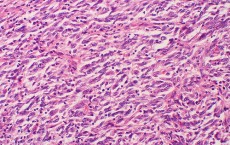
A pilot study led by University of Kentucky researchers shows that the gene expression analysis of urine sediment could provide a noninvasive way to analyze interstitial cystitis in some patients. Interstitial cystitis, also known as bladder pain syndrome, is a debilitating disease of the urinary...

National results indicate that tree cover in urban areas of the United States is declining at a rate of about 4 million trees per year, according to a U.S. Forest Service study published recently in Urban Forestry & Urban Greening.

It takes a lot of energy to extract heavy, viscous and valuable bitumen from Canada's oil sands and refine it into crude oil. Companies mine some of the sands with multi-story excavators, separate out the bitumen, and process it further to ease the flow of the crude oil down pipelines. About 1.8 mil...

A new report by the National Institute of Standards and Technology (NIST) and the Department of Justice's National Institute of Justice (NIJ) has documented 149 potential sources of human error in the analysis of crime scene fingerprints. The study by a working group of 34 experts recommends a serie...

In order to build the next generation of very large supercomputers, it's essential that scientists and engineers find a way to seamlessly scale computation performance without exceeding extraordinary power consumption. It is widely agreed that the major challenge to scaling future systems will no lo...

Bisphenol A (BPA) is a controversial chemical widely used in the plastics industry. A new study followed people over a 10-year time period and shows that healthy people with higher urine concentrations of BPA were more likely to later develop heart disease.

The first anniversary is approaching of the March, 2011, earthquake and tsunami that devastated Fukushima, Japan, and later this year debris from that event should begin to wash up on U.S. shores – and one question many have asked is whether that will pose a radiation risk.

Despite brutal cold and lingering darkness, life in the frigid waters off Alaska does not grind to a halt in the winter as scientists previously suspected. According to preliminary results from a National Science Foundation- (NSF) funded research cruise, microscopic creatures at the base of the Arct...

UC Davis scientists have uncovered a key suspect in the destructive inflammation that underlies heart disease and diabetes. The new research shows elevated levels of a receptor present on leucocytes of the innate immune response in people at risk for these chronic diseases. The receptors are the bod...

Researchers have discovered an extremely old anthropomorphic figure engraved in rock in Brazil, according to a report published Feb. 22 in the open access journal PLoS ONE. The petroglyph, which dates to between 9,000 and 12,000 years old, is the oldest reliably dated instance of such rock art yet f...

Investigators from Vanderbilt-Ingram Cancer Center (VICC) and 12 other centers in the United States and Australia have found that a new drug for patients with metastatic melanoma nearly doubled median overall survival.

While RNA is an appealing drug target, small molecules that can actually affect its function have rarely been found. But now scientists from the Florida campus of The Scripps Research Institute have for the first time designed a series of small molecules that act against an RNA defect directly respo...